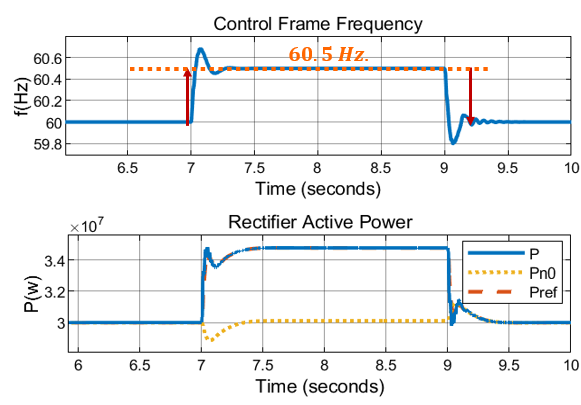LIBRARY
A Grid-Supporting Rectifier with Frequency and Voltage Regulation Capabilities

Most of the existing grid-interfaced rectifiers adopt direct power control or voltage-oriented control, neither of which leaves any margin for handling variations and disturbances on the grid side. This paper proposes a grid-supporting rectifier (GSR) featuring stability-enhancing functionalities. The power drawn by the GSR can be adjusted according to the grid-side voltage and frequency deviations and dynamics. The topology of the implemented 22 kV GSR testbed is shown in Fig. 1 With the DC-side power consumption usually fixed and inflexible, an additional energy storage unit is required to be introduced in order to compensate for the power difference between the rectifier grid side and the DC-load side; in the case of this work, a battery energy storage system (BESS) was interconnected to the DC-link bus through a dual DC-DC converter. Fig. 2 shows the GSR testbed frequency-regulation-functionality simulation result.

To emulate a power grid underloading event, for a short period the grid-side frequency was forced to be 0.5 Hz higher than the nominal frequency; thus, the GSR drew more power from the grid side to alleviate the underloading conditions. Also, if the grid-side voltage deviates from the nominal value, the GSR will inject or absorb reactive power to help the utility voltage profile stay in the desired range.
The concept of GSR was proposed in this paper to realize grid-support functionalities. The rectifier voltage regulation capability is realized by adjusting reactive consumption under volt-var mode; the frequency regulation functionality is realized by power-balance-synchronization control and load-side BESS power injection adjustments. Generalized Nyquist Criterion-based methodologies were performed for the purpose of stability assessment.




















































































